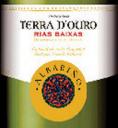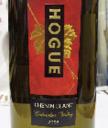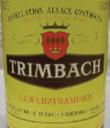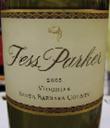The Grape Divide
Explore lesser-known white varietals
Grüner Veltliner
What?
Grüner Veltliner typically produces dry, crisp wines with aromas and flavors of pear, grapefruit, green veggies, fresh flowers, lime zest and peach, accented by spice, notably pepper, clove and nutmeg and a distinct mineral quality. Commonly consumed young, the wines often possess a steely backbone of acidity, which enables the best bottles to age gracefully.
Where?
Indigenous to Austria, Grüner Veltliner constitutes 36 percent of all vineyard plantings, making it Austria’s most famous grape variety. Also grown in Hungary and the Czech Republic.
When?
Known for being an incredibly food-friendly wine, enjoy Grüner Veltliner with goat cheese, brie or mild semi-soft cheeses, sautéed pork chops, veal, baked ham, sausages and chicken dishes. It also works well with flavorful foods like Asian, Moroccan, Cajun, Creole and Indian cuisine or with salads and most vegetables.
 Albariño
Albariño
What?
Albariño is noted for its intense and highly aromatic bouquet dominated by peaches, almonds, apricots and lychee nuts. They are typically delicate, lively white wines with crisp acidity and a refreshing quality, which makes them great with food.
Where?
This is Spain’s most distinct white grape varietal, which is grown principally in Galacia in the northwest of Spain and is also popular in Portugal’s Vinho Verde region. Some Australian winemakers have begun experimenting with Albariño in recent years as well, but the best examples still come from Spain.
When?
This food-friendly wine works with a range of dishes including antipasto, caviar, smoked fish, soups and chowders, sushi and sashimi, salads, grilled fish, steamed or boiled lobster, mussels, crab, raw oysters, pasta with pesto or cream sauce, ceviche, Asian fare and more. It’s also quite delicious when sipped on its own!
 Chenin Blanc
Chenin Blanc
What?
While most are considered off dry, this incredibly versatile grape is capable of producing wines ranging from crisp and dry to sweet dessert wines and even brandy. General characteristics include aromas and flavors of apricots, honeysuckle, melon, green apple, citrus and spice. It offers a nice, rich texture and refreshingly crisp acidity.
Where?
A native of the Loire Valley, where it is used to produce Vouvray and Anjou, Chenin Blanc is the most widely planted varietal grape in South Africa, where it is also known as Steen. It is planted in Australia and California, where it is most often used as a blending grape, and a bit in Chile and New Zealand.
When?
Dry Chenin Blanc works well with antipasto, raw oysters, steamed mussels, grilled shrimp, steamed lobster and goat cheese. An off-dry version pairs well with curry dishes, blackened fish, molé sauce, baked ham, roasted turkey, quiche and omelets, sushi, Chinese food, salads, barbecued pork, veal and chicken.
 Gewürztraminer
Gewürztraminer
What?
This quality white varietal is prized for its distinct spiciness, both on the nose and the palate. Most are vinified dry-producing wines with a beautiful bouquet of lychee nuts, rose petals, peaches and spice. As it has a naturally high sugar level, Gewürztraminer is capable of making luscious late-harvest dessert wines with great aging potential.
Where?
“Gewürz” literally means “spice” in German, however, this grape has found its principle home in Alsace, France, where it is the second-most widely planted grape. Gewürztraminer is also planted in Germany, Italy and, to a lesser extent, in Australia, California, Israel, Canada and New Zealand.
When?
The spicy quality of Gewürztraminer wines pair well with Chinese, Indian, Thai and Creole cuisine, as well as sushi and sashimi. It’s also a good match with mild blue cheeses, foie gras, liver pâtés, quiche, smoked fish, grilled oysters, veal, roasted quail, rabbit, honey baked ham, barbecued pork and grilled sausages.
 Viognier
Viognier
What?
Viognier is known for its incredibly fragrant bouquet bursting with scents of dried apricots and peaches, fresh and dried flowers and hints of spice. While styles vary from region to region, many are richly textured, fruit-forward, full-bodied, round and complex. Late-harvest Viognier makes a wonderful honeyed dessert wine.
Where?
Viognier’s origin is northern Rhône, but it is also commonly found in southern Rhône and the Languedoc. In recent years, Australia and California have achieved much success with Viognier, and it is also being cultivated in Canada, Washington State, New York and British Columbia.
When?
Viognier is ideal when paired with aromatic and flavorful cuisine such as Thai, Chinese, Cajun and Vietnamese. It’s also well suited for fish and shellfish, with barbecued chicken, pork tenderloin, salami and frankfurters, veal chops, braised rabbit and some hardto- match vegetables such as artichokes and asparagus.
